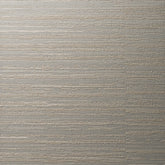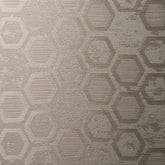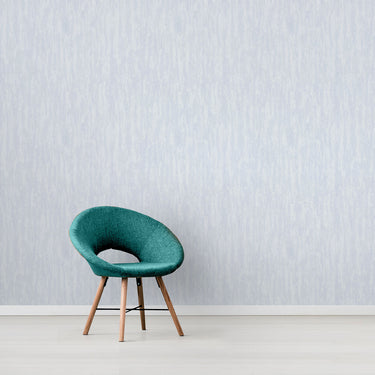Maximalism vs. Minimalism: Finding Your Perfect Interior Design Style
In 2025, everybody knows what "interior design" is, but for someone who doesn’t know, it's the process of creating a safe, beautiful, and functional interior space within a building. But is that everything?
Well, no, interior design was never only about designing sofas and painting walls. It's a relatively accurate reflection of the way we live, sense, and think.
Every time you walk into someone’s home, you're not just seeing their taste; you're seeing philosophy. Some homes whisper. Others shout. This tension between visual restraint and sensory richness lies at the heart of two dominant design styles: minimalism and maximalism.
Both are more than trends. Their ideologies are rooted in art, culture, psychology, and even economics. One finds beauty in simplicity. The other thrives on abundance. But which one is “better”? This, we will see further in this blog. Let's talk about it.
What is Minimalism?
Minimalism is a design philosophy that reflects a mindful lifestyle of simplicity and concentration. It's an ideology as much as it's a design preference, where you not only remove tangible clutter but also cognitive clutter. It provides room to breathe, think, and live freely.
Historical Context
In the early 20th century, minimalism was drawn from the German Bauhaus school of design and Japanese Zen philosophy. From 1919 to 1933, the Bauhaus school of design aimed to eliminate unnecessary ornamentation in its pursuit of clean lines, geometric forms, and monochromatic hues.
Japanese aesthetics infused minimalism with a spiritual interpretation through the form of tea houses, natural incorporation, and consciously designed emptiness, where every element serves a purpose.
During World War II, the minimalist style gained popularity as a representation of post-war austerity. With less to use and a social requirement for simplicity and order, the "less is more" ideal became both necessary and attractive.
Psychological and Emotional Impact of Minimalism
- Reduced Cognitive Load: Visual clutter creates mental noise. Minimalist spaces foster calmness and focus.
- Stress Reduction: Clean open spaces are associated with lower cortisol levels.
- Promotes Mindful Living: By paring down possessions, you cultivate appreciation for each item.
Core Elements of Minimalist Design
Color Scheme: Soft pale whites, light greys, muted beiges, and pale pastel colors dominate. Black is used randomly for an accent.
- Materials: Wood, stone, metal, and glass create tactile minimalism.
- Furniture: Sleek, multi-functional furniture with minimalist detailing.
- Lighting: Maximal use of natural lighting; minimalist, recessed lighting.
- Textures: Matte finishes, soft textures, and muted contrasts (linen-upholstered furniture, wool rugs).
- Room to Breathe: Simplifying belongings and visual clutter, minimalism helps minimize mental overwhelm. Your mind can unwind in a world where everything has significance and purpose.
- Intentional Living: Empty homes compel you to be mindful of what you allow into your life, something that all too readily spills over into habits, relationships, and aspirations.
- Put Things Second to Experience: Minimalism enables you to prioritize a few things first. Minimalism is not about bare walls; it's about having an uncluttered mind and mastering the chaotic world.
A minimalist home encourages you to beautify your space with what truly matters, whether it's a treasured antique lamp, a cherished favorite novel, or artwork that always brings a smile to your face.
What is Maximalism?
In contrast to minimalism, Maximalism in design is characterized by using multiple layers of patterns, colors, textures, and various styles to create intricate and visually appealing settings that often convey a narrative.
Historical Context
Maximalism has long been praised, from the luxury of Baroque and Rococo architecture to the lavishly furnished Victorian dwellings. The purpose of these interiors was to display wealth, culture, and identity.
The Memphis Group fueled the modern revival of maximalism in the 1980s, an Italian design collective that defied minimalist norms with wild colors, unconventional shapes, and bold statements. Often seen as a response to minimalism’s rigidity, maximalism asks, "Why limit yourself?" Why not surround yourself with the things that make you feel alive?
Psychological and Emotional Impact of Maximalism
- Emotional Stimulation: Maximalist spaces are filled with vibrant colors, intricate patterns, and personal artifacts, which can energize and uplift your mood. Visual variety invites curiosity, inspiration, and creativity.
- Self-Expression: Maximalism serves as a canvas for personal identity. Every object tells a story, whether it's a travel souvenir, family heirloom, or vintage find. It’s deeply personal, often feeling like a lived-in memoir.
- Comfort Through Clutter: For some, an abundance of objects doesn’t cause stress; it provides emotional safety. Being surrounded by cherished items can bring a sense of nostalgia, rootedness, and joy.
- Creative Freedom: Without the rules of symmetry or minimal constraints, maximalism allows for boundless experimentation. It's ideal for people who feel most themselves in environments rich in visual and tactile cues.
- Personality Amplifier: From bold colors to eclectic décor, maximalist interiors are unapologetically loud. They embrace individuality and celebrate uniqueness, making space an extension of the occupant’s soul.
Core Elements of Maximalist Design
- Bold Color Palette: Rich, saturated hues such as emerald, green, deep burgundy, sapphire blue, and mustard yellow. Contrasting colors are intentionally layered to make each element stand out.
- Pattern Play: Stripes, florals, geometrics, and animal prints coexist harmoniously. Walls, rugs, and upholstery often feature layered patterns that intentionally clash.
- Mix of Eras and Styles: Maximalism thrives on juxtaposition and the freedom to blend aesthetics across periods.
- Abundance of Decor: Books, art, candles, plants, and ceramics - nothing is off-limits. Surfaces are rarely empty, and wall space becomes an opportunity for gallery-style arrangements or oversized art.
- Textures Everywhere: Think of velvet sofas, silk curtains, shaggy rugs, and rattan furniture. The variety of materials adds depth and tactile intrigue to the environment.
- Layered Lighting: Lighting Becomes Part of the Story. Statement chandeliers, table lamps with printed shades, and neon art add mood and personality.
Despite the apparent excess, successful maximalist spaces are thoughtfully curated. There’s intention behind every placement, turning what could be chaos into visual storytelling.
Design and the Mind: Psychological Effects
Let us explore the psychological effects of design!
How Minimalism Promotes Mental Clarity
Research has shown that mess in physical space will manifest as mess in the mind. Clean, simple, bright, uncluttered, and unwanted objects provide a feeling of visual comfort and emotional calm. These spaces promote concentration, help in calming anxiety, and facilitate mindfulness. Simple spaces are ideal for individuals with sensory overload or ADHD. For instance, a writer with ADHD might find greater productivity and focus on a home office that features a simple desk, neutral walls, and minimal décor. The less visual stimulation, the easier it becomes to concentrate.
Maximalism as a Tool for Emotional Expression
By contrast, maximalism can serve as an emotional refuge and a source of identity. A picture-strewn, book-lined, memento-heavy, textile-overloaded home is a haven of memory and personal narrative. Such rich, thick environments promote creativity and are well-suited to those who thrive on sensory input.
For example, an ADHD writer can work more efficiently and concentrate better in a home office with a plain desk, beige walls, and minimal decor. The fewer visual distractions, the better it is to focus.
A Modern Middle Ground
Now, homeowners generally opt to merge elements of the two styles, usually known as modern eclecticism or on-purpose maximalism. The idea is a balance achieved with a mix of simplicity and personality. A case in point could be an otherwise minimalist space that includes a single show-stopping chandelier, striped tile in a neutral kitchen, or a rainbow-colored gallery wall on a white wall.
You can use minimalist furniture as a starting point and add warmth and personality with various layers of accessories, such as rugs, vases, books, and paintings.
This maximalist-minimalist hybrid allows you to have the clean slate of mind that minimalism offers, while still expressing yourself in a maximalist abundance. It's not rules, it's about designing spaces that both represent who you are and how you want to feel.








